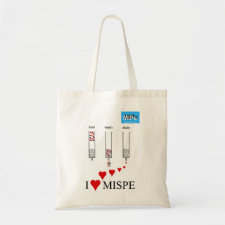
Authors: Wei MH, Wang S, Jiang WY, Chen HY, Wang Y, Meng T
Article Title: Preparation and Characterization of Dual-Template Molecularly Imprinted Membrane with High Flux Based on Blending the Inorganic Nanoparticles.
Publication date: 2018
Journal: Journal of Inorganic and Organometallic Polymers and Materials
Volume: 28
Issue: (1)
Page numbers: 295-307.
DOI: 10.1007/s10904-017-0716-4
Abstract: In this study, the dual-template molecularly imprinted composite membrane (D-MIM) was synthesized using ferulic acid and cinnamic acid as the mixed templates, α-methacrylic acid as functional monomer, ethylene glycol dimethacrylate as crosslinker, 2,2-azobisisobutyronitrile as photoinitiator inducing polymerization reaction, furthermore blended nanoparticles so as to improve mechanical strength and pure water flux of membrane. This paper has researched that the effect of variety of nanoparticles and its quantity, the quantity of photoinitiator, total template-functional monomer (T/F) ratio on performance of prepared membrane. The study has founded optimum parameters of synthesis: nanoparticles 18 nm TiO2 of 1 wt%, photoinitiator of 0.3 g, T/F ratio is 1:3. Under the above conditions, D-MIM would present a high separation efficiency of template molecules (ferulic acid and cinnamic acid) and the analogues (caffeic acid and syringic acid) with the permeation rate of about 100%. However, the permeation rate of glucose which has an analogous formula weight and extremely different structure is about 60%. From the foregoing, it showed that the D-MIM has specific selectively to the template molecules and its analogues, but the substances which have obvious distinctions in structure would present low permeation rate. It can be seen that D-MIM can identify the same kind of substance with specificity. Therefore, it can be used in the enrichment and separation of some active ingredients of traditional Chinese medicine, the detection of toxic substances in food and so on. Finally, the scanning electron microscope and FT-IR spectrometer has been used to visualize the structure morphology of the prepared membrane and to quantity the surface characteristics
Template and target information: dual template, ferulic acid, cinnamic acid
Author keywords: Dual-Template, Molecularly imprinted composite membrane, nanoparticles, water flux, Permeation rate



Join the Society for Molecular Imprinting

New items RSS feed
Sign-up for e-mail updates:
Choose between receiving an occasional newsletter or more frequent e-mail alerts.
Click here to go to the sign-up page.
Is your name elemental or peptidic? Enter your name and find out by clicking either of the buttons below!
Other products you may like:
 MIPdatabase
MIPdatabase









